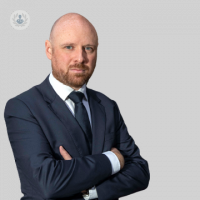Why do athletes get injured so often?
Written in association with:While the health benefits of physical activity are well known, injuries do occur. It is very important to know how injuries can be prevented. Experienced and highly-regarded senior football and sports medicine physician based in London, Dr David Porter explains in further detail why injuries occur and how to best prepare your body to prevent injuries.

What sports cause injuries?
Exercise has many benefits for our overall physical and mental health. Any form of physical activity is demanding on the body and carries an injury risk. Sometimes these injuries can be so severe, in the case of athletes, they can be career-ending. The nature of the injury is generally determined by the type of sport. Contact sports, like rugby or American football, are highly demanding and pose a high risk of injury. Sports like tennis or squash which demand direction changes and cause repetitive strains are tough on the joints.
Can injury be prevented?
Many factors that cause injuries can be monitored and prevented. It is easier to prevent an injury from occurring rather than treat it later. Understanding why and how injuries occur, and working on factors that influence this, can prevent injuries from occurring.
What factors influence injuries?
There are several factors that influence the likelihood of sustaining an injury. These include:
- Fatigue: During physical activity, the muscles are engaged but when they start to run low on energy, lactic acid builds up. If the body is unprepared for the movement, the muscles tire quicker. Fatigue is a critical factor that influences injuries. Training your body to mimic the demands of the sport prepares you for the movements you anticipate enduring. This makes the athlete less likely to get injured.
- Poor muscle conditioning: Injures occur frequently when there is an imbalance in the muscle strength resulting in weak spots. For example, ACL tears often result when there is an imbalance between the quadriceps and hamstring. To combat this, a strength and conditioning programme (S&C) can target the weak points, improving their strength to eliminate the imbalance and improve mobility. It can contribute to a long-lasting and successful career.
Why is the prevention of injury so important?
It is understandable that injuries are common in sports because of the associated high-physical demands. Prevention can help avoid:
- pain
- long recovery time
- expense of therapy
Advice from a trainer and S&C coach can help to improve mobility and fitness levels in accordance with the chosen sport and avoid injury.
If you are interested in booking a consultation with Dr David Porter, you can do so by visiting his Top Doctors profile today.


